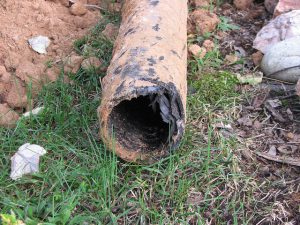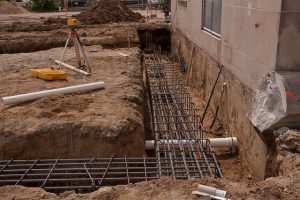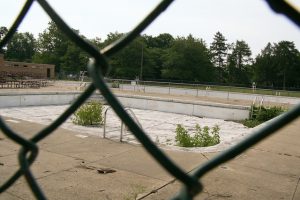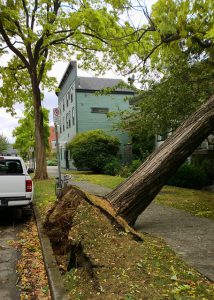
The roots of your tree are incredibly important – they are the foundation for which much of the work that the tree does happens. They are beautiful, if you look closely enough, and they are strong. However, that doesn’t meant that they are always easy to handle. For many of us, they are in the way when we walk through our yards, when we mow the lawn, or when we try to get some sort of construction done.
However, roots are so important that you have to weigh the pros with the cons when it comes to what you need.
Here are a few problems you need to look for with your roots:
4. Roots Growing Into Sewer Pipes
- Part tree problem, part plumbing problem
- Occurs more often in warmer environments
- Needs to be handled quickly
The most common problem facing homeowners when it comes to their roots is a root or roots encroaching on your plumbing. Sometimes, it is as simple a blockage that a professional can easily solve – but sometimes the entire pipe will break, which can cause some pretty hefty problems.
Tree roots move through the soil extremely slowly, but that doesn’t mean you will notice the problem. As the area around pipes get warmer and wetter, the roots themselves are more likely to crack and break. Eventually, a tree’s roots may grow into the pipe and cause clogs, according to Eco Plumbers. This is when the problems start. If you have slow draining water, funky smells in your home, or something just doesn’t sound right, you may have a big root problems on your hands.
3. Roots Damaging Foundation
- Soil condition leads to most root damage to foundations
- Root barriers can prevent problems
- Planting shallow root trees helps
Many people blame a tree for ruining the foundations of their homes, but it typically isn’t the fault of the tree – they don’t know what is there. Instead, it has to do with the soil quality around your home’s foundation.
According to Eden Structural Solutions, “Soil that consists of loose dirt and rocks, on the other hand, simply tends to shift and become displaced, which allows roots to move through it more easily. It’s highly useful to know which type of soil your home sits on because that should tell you the kind of damage that tree roots may have in store for your residence.”
If you have roots that are quickly moving toward your foundation, you should be fine as long as your soil is in place. Many new homes have root barriers that will prevent them from coming any nearer to the home, but not all do, so it is important to pay attention if you have widespread root systems throughout your yard. If you are planting trees, make sure that you move slightly away from your home so that you don’t have any problems.
2. Roots Damaging Pools
- Pool company should survey before placement
- There is a risk for above ground and in ground pools
- Think about equipment as well
When you first get a pool installed in your yard, a common question you will have to answer is how many trees you have in your yard, how big they are, and whether you can see the roots. This is because the tree root is one of the biggest enemies of any pool. In many cases, you are able to find a space that is safe and either eliminate the roots or put up a barrier so that they don’t post any problems.
However, sometimes people will plant trees after the pools has been installed, and that leads to problems.
According to California Pools, the most common trees that destroy pools are poplar, ash, alder, and pine. However, any tree really poses a risk, depending on where it is. Of course, putting a pool too close to a tree isn’t recommended anyway because of the debris that gets into the pool.
1. Roots Uprooting Sidewalk
- Very common in homes built after 1980
- May require cooperation with local township
- Homeowner responsibility to report and perhaps handle
It is something that is quite common: the entire sidewalk is uneven because of a root that has grown up. When left untreated, it can be an extremely dangerous situation. Even worse, in some areas, the homeowners is liable to taking care of the sidewalk. If someone does fall, you can be sued for any injuries.
Still, you can’t always control roots, so you have to tackle the problem as soon as you see it.
Removing roots so that they don’t uproot the sidewalk takes a lot of time and effort. Home Guides explains the process: “Pruning roots to avoid buckling a sidewalk is typically not a good option. Trees need their roots for support and ff you remove them, the tree may be prone to toppling in the wind. If you remove roots less than 2 inches in diameter, they may simply grow back. If you prune too many roots, the tree may shed branches or die. You should not prune a root more than 1 or 2 inches in diameter that is within five times the diameter of the trunk. This means you should not prune a root that is within 75 inches from a trunk that is 15 inches wide. If you prune a tree to limit its size, you will also limit the spread of its roots.”
Needless to say, it is best to leave the work to a professional.
Roots are dangerous to parts of your home, but they don’t have to be. There are safe ways to eliminate roots so that they don’t cause you anymore problems. If you are planting trees, you can talk to a tree care professional who can recommend the best trees for your property as well as help you to place the trees so that they run less risk of damaging anything.
If you are looking for a tree care professional in Southern Ontario, give Van Till Tree Care a call today at (705) 653-3777. We will help you to better understand your trees and how to handle any green spots, pruning trouble, or soil issues that you may find – of course, we can also help you with many other issues that you might find for your trees – from the very top of the tree to the roots.





